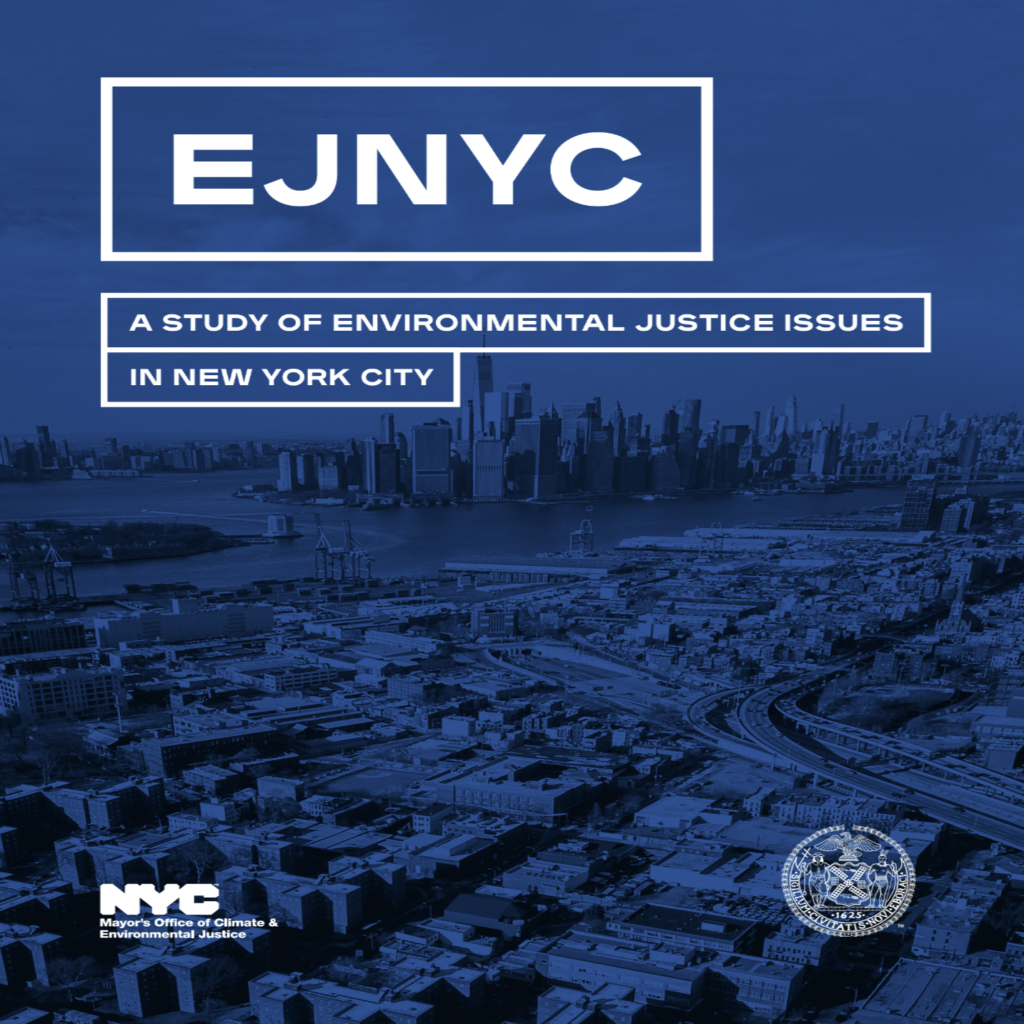Beginning in March 2022, Hester Street collaborated with the NYC Mayor’s Office of Climate & Environmental Justice (MOCEJ) and engineering and design firm Buro Happold to support research and development for the New York City Environmental Justice for All (EJNYC) Report and the EJNYC Mapping Tool.
The report and mapping tool, which were published and announced by MOCEJ on April 5, 2024, lay the foundation for developing the City’s forthcoming public engagement process and EJNYC Plan, which will identify citywide and local initiatives for promoting environmental justice, and embed equity and environmental justice considerations into the City’s decision-making processes.
Local Laws 60 and 64 of 2017 required the Environmental Justice Interagency Working Group to develop a comprehensive study of environmental justice with an accompanying interactive online map. The EJNYC Report and Mapping Tool fulfills this mandate, while also aligning with increased attention to environmental justice at the state and federal level. For example, in 2019, the New York State legislature passed the Climate Act (originally known as the Climate Leadership and Community Protection Act), which required the State to reduce economy-wide greenhouse gas emissions and ensure that at least 35% of clean energy and energy efficiency program benefits are distributed to disadvantaged communities (DACs). The EJNYC Report and Mapping Tool use the State’s definition of DACs to analyze disparities in environmental benefits and burdens citywide.
The EJNYC Report provides New Yorkers with an understanding of present-day systemic environmental inequities in the city, highlighting historical precedents and key findings while disseminating program and policy spotlights and case studies which shed light on effective community-led environmental justice initiatives. The EJNYC Mapping Tool is an online repository, hosting an interactive mapping and data tool that provides NYC-specific environmental justice indicators that are accessible to members of the public, community-based organizations, and City agencies.
For this project, HST collaborated with Buro Happold to research and draft sections of the report and to design and develop the mapping tool. We’re proud to be part of the development of this EJNYC Report and we look forward to seeing how frontline communities will use the information provided in the report to continue to advocate for environmental justice investments in NYC.
Key findings of the EJNYC Report include:
- Access to Resources: Low-income Hispanic or Latino and Black residents report the highest rates of transit hardship, or inability to afford transit fares, across racial groups. Low-income Bronx residents report the highest rates of transit hardship across the five boroughs. Bronx residents experience both the highest rates of food insecurity and the highest rates of diet-related diseases, such as diabetes and high blood pressure.
- Exposure to Polluted Air: Communities of color are disproportionately exposed to emissions from heavy-duty diesel vehicles due to the location of arterial highways, commercial waste routes, delivery routes, and parking facilities for medium and heavy-duty fleets.
- Exposure to Climate Change: Most of New York City’s population living in neighborhoods with high heat vulnerability (HVI-5 and HVI-4) live in EJ Areas (disadvantaged communities or DACs), particularly in Central Brooklyn, Upper Manhattan, Southeast Queens, and the Bronx.
- Structural Racism: Black and Hispanic or Latino residents are more likely to experience health-related housing maintenance deficiencies, transit hardship, and energy cost burden.
More information on the EJNYC report and mapping tool is available at https://climate.cityofnewyork.us/topic/environmental-justice/.
